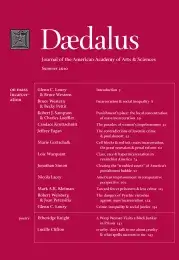American imprisonment in comparative perspective
Over the last forty years, a number of Western democracies have significantly increased their use of imprisonment. What explains this phenomenon? The most influential line of reasoning looks to the global economic changes that began in the 1970s: the contraction or collapse of manufacturing industries; the creation of a large sector of people who faced long-term unemployment or were employed in insecure forms of work; and consequent pressure on the welfare state. These changes, it is argued,1 have eroded the consensus that sustained postwar penal welfarism. A rise in recorded crime across Western countries gradually normalized criminal victimization and the management of the risk and fear of crime. Crime became, for the economically secure, an increasingly politicized issue, generating a “penal populism” that brought in its wake repressive and managerial criminal justice strategies.
This is a powerful argument. However, its focus on structural forces and on general categories such as “late modern society” or “post-Fordism”2 directs attention away from variations in the institutional framework through which those forces are mediated in different countries. This is unfortunate; notwithstanding the wide diffusion of a political discourse of penal populism, there are striking differences in the extent to which that discourse has led to greater severity in penal practice. Not all “late modern” democracies have plumped for a “neoliberal” politics. Countries like Denmark, Germany, and Sweden have managed to sustain relatively moderate, inclusionary criminal justice systems–systems premised on reintegrating offenders into society–throughout the period in which the British and American systems have moved toward ever-greater penal severity. Even then, the differences in the scale and quality of punishment between British and American penal systems are striking, with the United States occupying an unenviable position as the unrivaled leader among advanced economies in the costly business of mass imprisonment.
The baleful distinctiveness of the United States’ incarceration record is epitomized, though not exhausted, by imprisonment rates between four and twelve times higher than those in other political economies at similar levels of development (see Figure 1). The picture becomes even more baffling when we consider variation among U.S. states’ imprisonment rates, which, in the mid-2000s, ranged from less than double those of the most . . .
